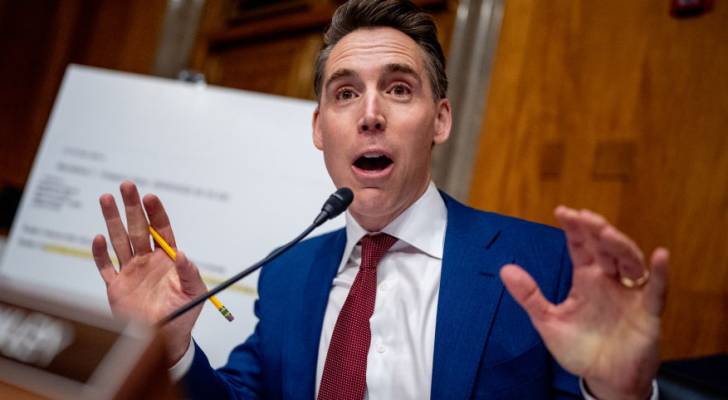Should you open a savings account or CD before the Fed's next meeting?
If you’re considering opening a new savings account or certificate of deposit (CD), knowing how the Fed’s decisions impact your interest earnings over time is key to making an informed decision about where to put your money.
The Federal Open Market Committee (FOMC) is set to hold its next meeting on June 17-18, 2025. During this time, committee members will determine whether to raise, maintain, or lower the federal funds rate.
These rate decisions are key indicators of the health of the economy and, ultimately, trickle down to affect deposit accounts. Here’s a closer look at how you can take advantage of today’s CD and savings rates in light of the Fed’s policy decisions.
The federal funds rate is the target interest rate set by the Federal Reserve. It determines the rate that banks charge one another to borrow funds overnight in order to meet reserve requirements.
The federal funds rate is expressed as a range, which is currently 4.25%–4.50%. Banks negotiate a specific rate between each other within that range.
The Fed uses the funds rate as a tool to quell inflation. When inflation is high, the Fed raises its target rate to make borrowing money more expensive, which discourages consumer spending and helps bring everyday costs down. When the economy needs a boost, the Fed might initiate a series of rate cuts to encourage more spending and borrowing.
Read more: A look at the federal funds rate over the past 50 years: How has it changed?
Changes to the federal funds rate have major implications for financial institutions and the economy at large. But these decisions also affect your bottom line.
Although the Fed’s rate doesn’t directly impact the interest rates set by individual banks for consumer deposit accounts and loans, they are closely correlated. When the Fed raises its rate, for example, interest rates on deposit products such as high-yield savings accounts and CDs also tend to go up. And when it lowers its rate, deposit interest rates generally fall.
The Fed will meet again on June 17-18 and decide whether or not to adjust the federal funds rate. (In its last meeting, the committee maintained the target range for the federal funds rate at 4.25–4.50%.) The Fed has maintained this target range since its last rate cut in December 2024.
As economic activity continues to expand at a solid pace, many wonder whether the Fed will cut its target rate this year. In its last meeting, the committee released the following statement:
“In considering the extent and timing of additional adjustments to the target range for the federal funds rate, the Committee will carefully assess incoming data, the evolving outlook, and the balance of risks. The Committee will continue reducing its holdings of Treasury securities and agency debt and agency mortgage‑backed securities. The Committee is strongly committed to supporting maximum employment and returning inflation to its 2 percent objective.”
It’s expected that the Fed will once again hold its target rate steady in its next meeting. That means there likely won’t be any major movements to interest rates for the time being.
That said, we can’t know for sure what will happen. So, while you wait for the Fed’s official announcement about how rates will change (or not), it could be a good time to evaluate your current savings account or consider opening a new account.
Should the Fed decide to keep rates the same, it won’t have a direct impact on your savings and CD rates, which means now is as good a time as any to open an account and take advantage of historically high interest rates. As it stands, the best savings and CD accounts are paying around 4% and up.
However, if the Fed does decide to lower rates, now might be your last chance to lock in today’s competitive rates with a CD.
Ultimately, waiting until the Fed’s next announcement before opening a new deposit account won’t have a significant impact on your potential earnings. Now is as good of a time as any to compare the current rates on your existing accounts and see if you could be earning more elsewhere.
For example, say your existing savings account earns 0.42%, the national average for traditional savings accounts. If you deposited $10,000, you’d earn a total of $42 in interest over one year.
However, some of the top high-yield savings accounts offer around 4%. If you deposited $10,000 at that rate, you’d earn $400 in interest over one year. That means you could be missing out on significant earning potential by leaving your money in a low-interest account.
Regardless of how the Fed adjusts the federal funds rate, it pays to reevaluate your current accounts and ensure you’re earning the best rate possible.
Read more: How to choose the right high-yield savings account for you
Latest News
- Trump's 'Big Beautiful Bill' Advances: Here's Who Wins And Loses
- Josh Hawley blasts Allstate CEO for making $26M last year — while company can’t ‘afford’ to pay out claims
- Morgan Stanley reveals mid-year recession, interest rate cut forecast
- Medtronic to separate diabetes business following recent struggles
- Bank of Japan’s Rate-Hike Window Narrowing, Ex-Board Member Says
- Big Money Keeps Buying Palantir













